Totsong bangus is a delicious and simple milkfish recipe that you can cook anytime. Although this is a Filipino dish, the ingredients have an Asian influence particularly, Chinese cuisine. It’s because “tahure” or fermented bean curd is a delicacy and a usual cooking ingredient among Chinese cuisine. To those who have not taste the tahure, you might not like it because it smells fermented and the taste is a salty and pungent. And with regard to cooking this dish, it is simple and the ingredients are few and easy to find.
Totsong Bangus: A Nostalgic Filipino Favorite
There’s something about the smell of fried bangus wafting through the house that takes me back to my childhood. I remember my Tita Liza standing by her wood-fired stove, carefully frying milkfish until its skin turned a perfect golden brown. She would hum an old kundiman tune while preparing one of our family’s favorite dishes, totsong bangus.
At first, I wasn’t sure what made it so special. Was it the rich sauce made with tahure, or the way the milkfish absorbed all the savory flavors? It wasn’t until I started cooking it myself that I realized it’s not just about the ingredients but also the stories and traditions tied to this humble yet flavorful dish.
The Asian Roots of Totsong Bangus
Totsong bangus is a classic Filipino recipe, but its flavors reflect the influence of Chinese cuisine. The key ingredient, tahure or fermented bean curd, is a staple in many Asian dishes. Tahure has a strong, salty, and pungent flavor that can be intimidating for first-timers, but once it’s incorporated into the sauce, it creates a balance of savory and tangy notes that elevate the dish.
This fusion of Filipino and Chinese culinary traditions isn’t surprising. Our ancestors were skilled at blending flavors and techniques from different cultures, resulting in dishes that feel both familiar and exotic. For those who haven’t tried tahure, give it a chance—its distinct taste transforms into something truly special when cooked with the milkfish.
Preparing the Bangus: The Key to a Perfect Fry
The secret to a great totsong bangus starts with the fish itself. My Lola Rosa, who hailed from the fishing town of Navotas, always insisted on using fresh bangus. Before frying, she would sprinkle the fish with a bit of salt and let it sit for an hour or two. This step helps season the fish and draws out excess moisture, ensuring a crispy exterior when fried.
Frying bangus can be tricky, especially with its delicate texture and tendency to splatter. A tip I learned from my Kuya Ben is to heat the oil until it shimmers before adding the fish. This prevents sticking and helps the skin achieve that irresistible golden crust.
Crafting the Totsong Bangus Sauce
The heart of the dish lies in its sauce, a beautiful medley of sautéed aromatics, tahure, and vinegar. As a child, I used to watch my Nanay mash the tahure with vinegar and water, her hands expertly mixing the ingredients into a smooth paste.
Tahure’s bold flavor can be overpowering if not balanced properly, which is why the addition of vinegar is crucial. The acidity cuts through the richness of the fermented bean curd, creating a tangy sauce that pairs perfectly with the fried fish.
Sautéing the garlic and ginger first brings out their natural sweetness and infuses the oil with their aroma. Adding onions and tomatoes creates a base that enhances the sauce’s depth. These steps may seem simple, but they build layers of flavor that make totsong bangus so unforgettable.
The Final Touch: Simmering the Fish
Once the tahure mixture is added, the sauce is brought to a gentle boil before the fried bangus is carefully placed in the pan. It’s important to let the fish simmer for about 10 minutes to absorb the sauce’s rich flavors.
I learned from my Tito Ramon that this step also helps soften any crispy edges, allowing the fish to meld beautifully with the sauce. Some cooks add a pinch of MSG or vetsin to enhance the umami, but if you prefer to skip it, the dish will still taste amazing.
A Dish Worth Sharing
It isn’t just a recipe; it’s a reminder of how food connects us to our roots and loved ones. I think about my sister Mia, who recently moved abroad and made totsong bangus for the first time to cure her homesickness. She called me afterward, saying how the familiar flavors brought her back to our family dinners.
Cooking the milkfish dish can feel like a small act of love, whether for yourself or your family. It’s a dish that doesn’t demand much—just a few ingredients, some care, and a little patience—but it rewards you with a taste of home and a flood of memories.
Food for Thought
Did you know that bangus, or milkfish, is considered the national fish of the Philippines? Its mild flavor and tender texture make it a versatile ingredient in many Filipino dishes, from sinigang to relleno. Meanwhile, tahure, though less common in modern kitchens, has been used for centuries as a natural flavor enhancer in Asian cuisines.
By combining these two ingredients, the dish showcases the ingenuity of Filipino cooking—taking simple, accessible ingredients and turning them into something extraordinary.
So the next time you’re looking for a hearty, nostalgic meal, give totsong bangus a try. Who knows? It might just become a new favorite in your household, just as it has been in mine for generations.
How to Cook Totsong Bangus
Ingredients
- 1 pc medium sized bangus sliced into 4 - 5 pieces
- 2 squares tahure
- 1 pc large onion sliced
- 3 pcs tomatoes sliced
- 3 cloves minced garlic
- 2 Tbsp. ginger strips
- 1/3 cup vinegar
- 1 cup water
- 1 tsp. vetsin or MSG
- cooking oil for frying
Instructions
How to cook Totsong Bangus
- Sprinkle a little salt on bangus. Let stand for 1-2 hours and fry until golden brown.
- Mash tahure, add vinegar and water.
- Saute garlic, then add ginger. Stir sliced onion and tomatoes.
- Saute for 3 minutes, then pour in tahure mixture and cover.
- When it boils, add fried bangus and MSG or vetsin. Cook for 10 minutes.
Notes
Cooking Tips:
Season the Bangus Before Frying
Sprinkle salt on the bangus and let it rest for 1-2 hours before frying. This step helps draw out excess moisture, allowing the fish to crisp up beautifully when fried. Proper seasoning also ensures the fish absorbs the rich flavors of the sauce later on.Balance the Tahure with Vinegar
Tahure has a strong, salty, and pungent flavor that can overpower the dish if not balanced. Mixing it with vinegar not only mellows its intensity but also adds a tangy contrast that complements the fried bangus. This balance creates a sauce that is both flavorful and harmonious.Simmer for Maximum Flavor
After adding the fried bangus to the sauce, allow it to simmer for about 10 minutes. This step helps the fish soak up the sauce’s savory goodness, infusing every bite with flavor. Be gentle when stirring to avoid breaking the delicate milkfish.
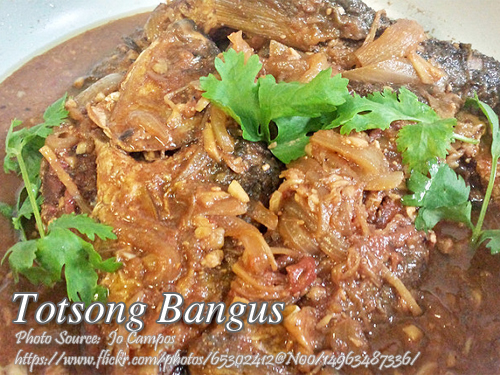

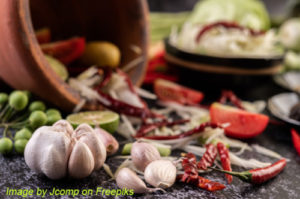
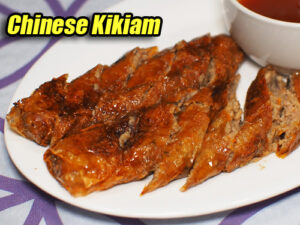
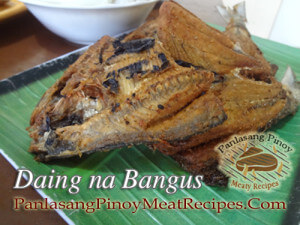
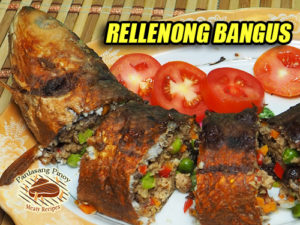
Thanks Agnes for notifying me. I’ve corrected it already.
i think that you switched the measurement of the vinegar and water. 1 cup water and 1/3 cup vinegar
Thanks sa panglasang pinoy recipes. I love to cook for my childrens and employee. Masarap talaga…. MORE POWER AND GOD BLESS YOU.
NO COMMENT… MASARAP TALAGA